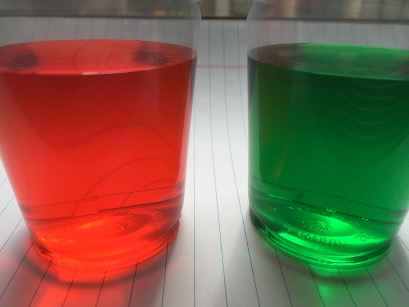Grade Level
PreK - 2
minutes
15 minutes or fewer
subject
English Language Arts
Activity Type:
poetry, psychology
In “Can Our Eyes Fool Our Taste Buds?,” children’s poet April Halprin Wayland summarizes a fun experiment in taste perception where people were quizzed after drinking red and green drinks that happened to be just apple juice dyed red or green. Here is Wayland’s poem, one of 200+ poems in The Poetry Friday Anthology for Science, edited by Sylvia Vardell and Janet Wong.
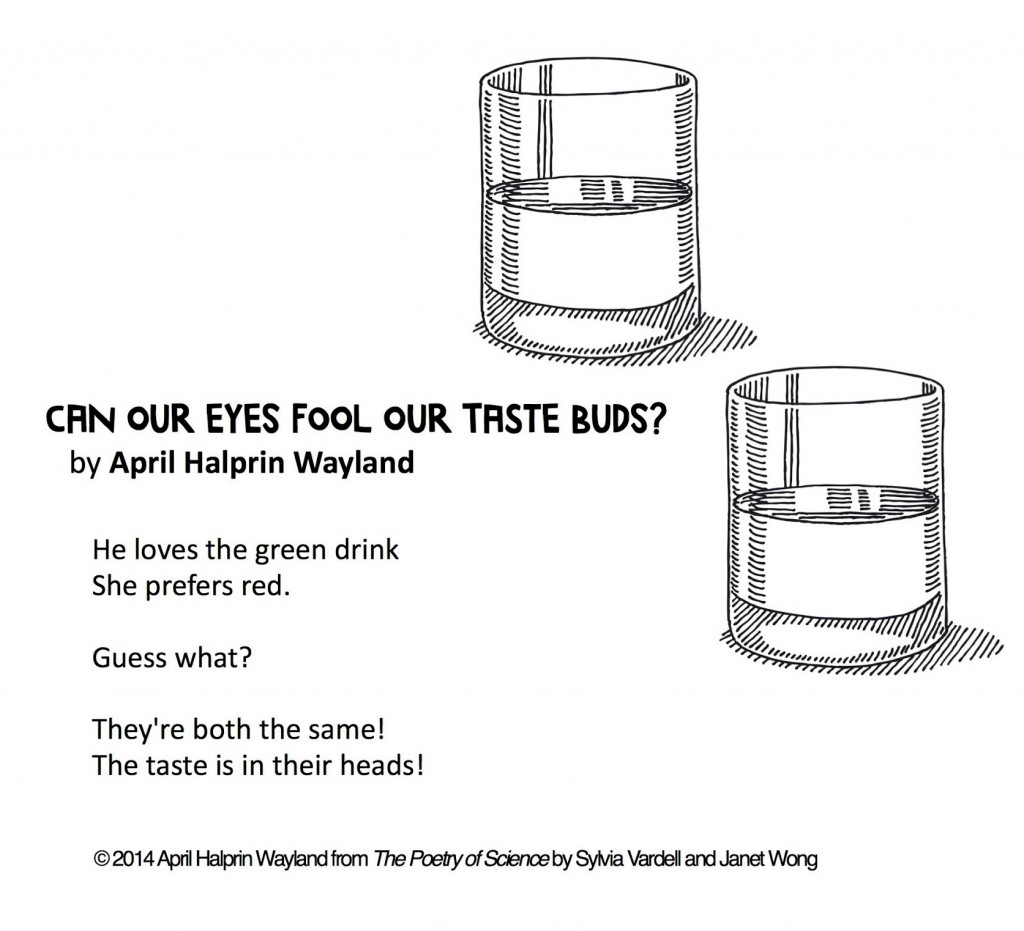
Note: This poem was inspired by a psychology experiment that used apple juice and red and green food coloring to examine whether people’s perceptions of taste are influenced by their sight. Check it out here!
Take 5 Mini-Lesson
Here is a Take 5 Mini-Lesson that makes it quick and easy to share the poem!
- As you read the poem aloud, hold up a glass, cup, or mug containing water or other beverage; this is your “poetry prop.” Pause dramatically after the line, Guess what?
- When you read this poem aloud again, coach students to read the one-line second stanza (Guess what?) while you read the rest.
- For discussion: Have you ever been surprised by something that didn’t taste the way you expected it to?
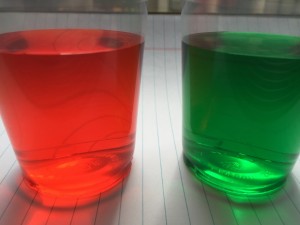
- If possible, try conducting the experiment outlined in this poem. Fill two glasses with apple juice, and color one with red food coloring and the other with green food coloring. Invite another adult (teacher, parent, or staff member) to try the two drinks and choose a favorite (if they can), and explain why they chose it.
- For another poem about investigations involving food coloring, revisit “Capillary Action,” by Joy Acey (Kindergarten, Week 6, page 34).
Step It Up!
If time allows, extend the Take 5 Mini-Lesson with the following activities:
Guess the Meaning
After reading the poem “Can Our Eyes Fool Our Taste Buds?,” identify any unfamiliar words and phrases such as “taste buds,” “prefer,” and “in their heads,” and discuss their possible meanings, given the context of the sentences.
Be the Engineer
If you were an engineer at a company that made cough syrup, what choices would you make when creating a new medicine?
Additional Literacy + Science Resources
Books
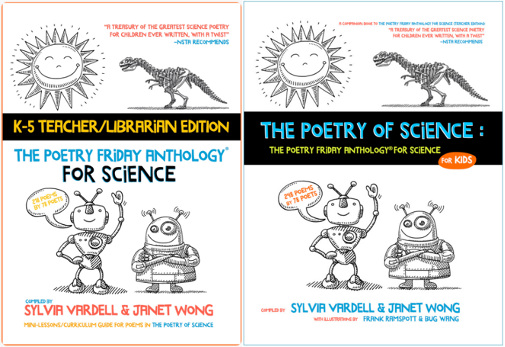
The Poetry Friday Anthology for Science: Poems for the School Year Integrating Science, Reading, and Language Arts (K-5 Teacher/Librarian Edition) by Sylvia Vardell and Janet Wong (Pomelo Books, 2014). Each of the 218 poems in this book comes with a Take 5 Mini-Lesson that suggests ways to teach the poem.
The Poetry of Science: The Poetry Friday Anthology for Science for KIDS by Sylvia Vardell and Janet Wong (Pomelo Books, 2015). This illustrated children’s edition contains the 218 poems in The Poetry Friday Anthology for Science (K-5 Teacher/Librarian Edition) plus 30 additional Bonus Poems.
You Just Wait: A Poetry Friday Power Book by Sylvia Vardell and Janet Wong (Pomelo Books, 2016). This book features creative activities to get tweens and teens (Grades 6-12) thinking, drawing, reading, and writing.
Articles
Vardell, S. M. and Wong, J. (2015). The symbiosis of science and poetry. Children and Libraries. Spring, 13, (1), 15-18.
Vardell, S. M. and Wong, J. (2014). Observe, explain, connect. Science and Children. 51, (8), April/May, 31-35.
Miscellaneous
Science poem postcards on Pinterest.
Standards
Next Generation Science Standards
2-PS1-1: Plan and conduct an investigation to describe and classify different kinds of materials by their observable properties. [Observations could include color . . . Patterns could include the similar properties that different materials share.]
K-2-ETS1-3: Analyze data from tests of two objects designed to solve the same problem to compare the strengths and weaknesses of how each performs.
Common Core State Standards – English Language Arts
CCSS.ELA-Literacy.W.K.8: With guidance and support from adults, recall information from experiences or gather information from provided sources to answer a question.
CCSS.ELA-Literacy.W.2.7: Participate in shared research and writing projects (e.g., read a number of books on a single topic to produce a report; record science observations).
CCSS.ELA-Literacy.L.1.4.A: Use sentence-level context as a clue to the meaning of a word or phrase
Meet the Writer/About Pomelo Books
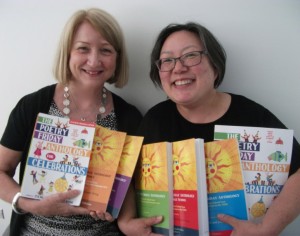 Sylvia Vardell and Janet Wong are the creative forces behind Pomelo Books and The Poetry Friday Anthology® series, launched in 2012 and adopted by hundreds of school districts nationwide.
Sylvia Vardell and Janet Wong are the creative forces behind Pomelo Books and The Poetry Friday Anthology® series, launched in 2012 and adopted by hundreds of school districts nationwide.
Sylvia Vardell is Professor in the School of Library and Information Studies at Texas Woman’s University. She has published extensively, including five books on literature for children and over 100 journal articles. Her current work focuses on poetry for children, including a regular blog, PoetryforChildren. She is also the regular “Everyday Poetry” columnist for ALA’s BookLinks magazine and the 2014 recipient of the ALA Scholastic Library Publishing Award.
Janet Wong is a graduate of Yale Law School and former lawyer who switched careers and became a children’s poet. Her dramatic career change has been featured on The Oprah Winfrey Show, CNN’s Paula Zahn Show, and Radical Sabbatical. She is the author of 30 books for children and teens on a wide variety of subjects, including writing and revision, creative recycling, diversity, and chess.
Educator's Toolbox
Meet the Writer
About Pomelo Books
@pomelobooksPomelo Books is the publisher of The Poetry Friday Anthology® series, dedicated to helping teachers and librarians teach poetry easily while meeting national and state standards.
